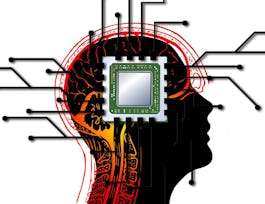In this course, you will learn the concept of decision making from the rational and psychological points of view. We will discuss the limits to rationality; the interplay between emotional thinking and rational thinking when making decisions; the systematic errors provoked by our cognitive biases and by the use of heuristics; the role of emotions and intuition in decisions; the aleatory errors (noise); and possible remedies and leverage on all these aspects when making decisions.



What you'll learn
Clarify the concept of decision-making in the context of organizations and its relevance for the managerial role.
Understand what are rational decisions, decision processes, decisions under risk, and the limits to our rationality in decision-making
Learn how to apply techniques to improve decision quality, such as PROACT, Decision Trees, Certainty Equivalent, Problem Solving Cycle, and MAP.
Details to know

Add to your LinkedIn profile
24 assignments
See how employees at top companies are mastering in-demand skills


Earn a career certificate
Add this credential to your LinkedIn profile, resume, or CV
Share it on social media and in your performance review

There are 5 modules in this course
In this first week of the course, you will learn the concept of decision making from the rational and psychological points of view. We will discuss the limits to rationality; the interplay between emotional thinking and rational thinking when making decisions; the systematic errors provoked by our cognitive biases and by the use of heuristics; the role of emotions and intuition in decisions; the aleatory errors (noise); and possible remedies and leverage on all these aspects when making decisions.
What's included
16 videos3 readings5 assignments1 discussion prompt
Week 2 will focus on rational decision-making processes to improve decision abilities and organizational capabilities. We will explore the PrOACT and Problem Solving Cycle methods.
What's included
16 videos3 readings4 assignments
In this week, we will explore decision analysis as a tool to support rational decision making, the role of uncertainty, risk, and probabilistic decision making, employing simple decision trees, sensitivity analysis and attitudes towards risk.
What's included
10 videos8 readings5 assignments
In the fourth week of the course the attention is on the dynamics of groups and its effect on decisions made in different types of groups. Biases and social behavior interplay and create new challenges. Virtual teams and different configurations of group decision making are also explored. Processes and practices to deal with these challenges are also presented this week.
What's included
12 videos5 readings5 assignments
Social, technological and economic changes bring new challenges and are transforming the role of management and the way decisions are made in organizations. This module brings three dimensions of these changes: complexity and chaos; hypothesis formulation and experiments; and the role of artificial intelligence in decision making.
What's included
5 videos3 readings5 assignments1 teammate review
Instructor

Offered by
Why people choose Coursera for their career




Recommended if you're interested in Business

Fractal Analytics

Arizona State University

University of Colorado Boulder

Dartmouth College

Open new doors with Coursera Plus
Unlimited access to 10,000+ world-class courses, hands-on projects, and job-ready certificate programs - all included in your subscription
Advance your career with an online degree
Earn a degree from world-class universities - 100% online
Join over 3,400 global companies that choose Coursera for Business
Upskill your employees to excel in the digital economy


